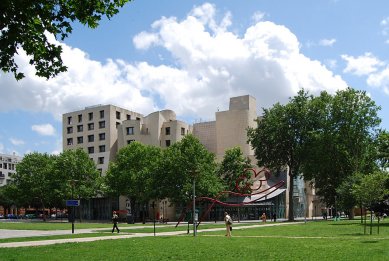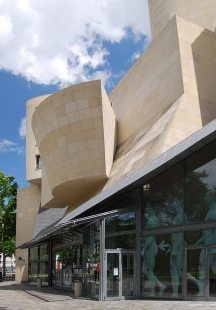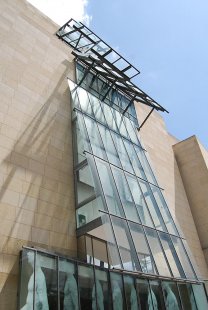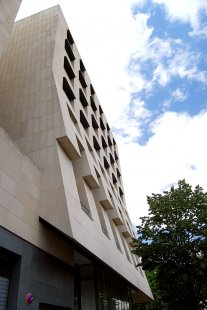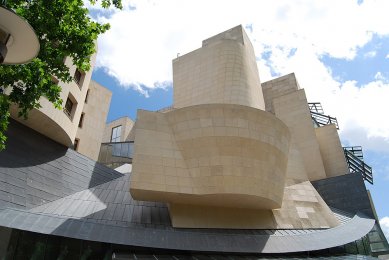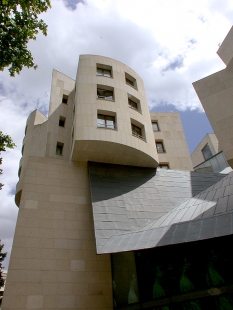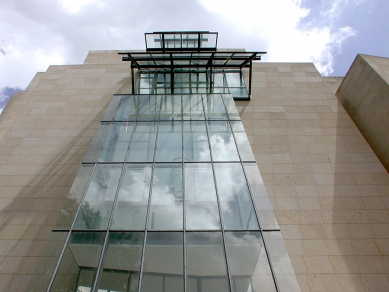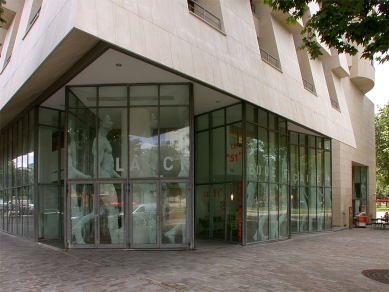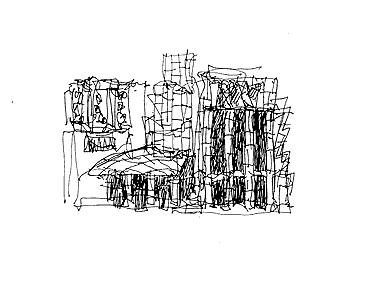
American Cultural Center
American Center

The American Center operated from 1931 to 1987 in a renovated Beaux-Arts building in Montparnasse, showcasing American artists, musicians, and performers to a French audience. In 1987, the old building was closed, and a new site was purchased near the Palais Omnisport and across the Seine from the new Perrault libraries. At the suggestion of Martin and Mildred Friedman from the Walker Art Center in Minneapolis, former American Center director Henry Pillsbury invited Frank Gehry to develop the project. For Gehry, this was his first realization of a large cultural institution outside the United States.
The site is located in a former industrial area currently undergoing rehabilitation - a railway track to the north, a new park to the south, apartment buildings to the east, and a public square to the west. However, most of the area is occupied by wine warehouses. The program for the new center called for 198,000 square feet (18,000 m²) designated for performances and exhibitions, offices, and apartments for visiting artists at a cost of 130 million French francs. The mass of the building responds to the Parisian rooftops. The materials (limestone, glass, and zinc) correspond to the historical tradition of Parisian architecture. Gehry's vision was a "petite ville" full of dance, music, and the energy of the city... an American interpretation of Paris without trying to create a French building.
The American Center was closed as an institution on February 12, 1996, and the building was offered for sale. On September 28, 2005, the Cinémathèque Française film library and the Bibliothèque du Film library were opened here.


